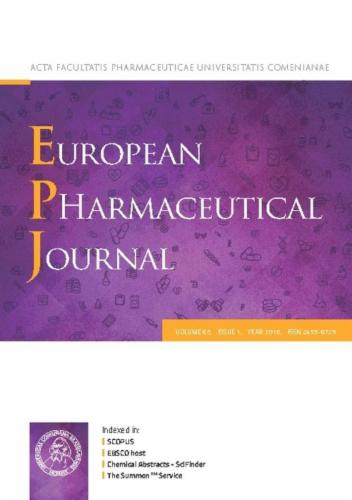最先进的血浆蛋白结合预测机器学习模型:使用 OCHEM 进行计算建模和实验验证
IF 4.3
3区 医学
Q1 PHARMACOLOGY & PHARMACY
引用次数: 0
摘要
血浆蛋白结合(PPB)与药代动力学、药效学和药物毒性密切相关。现有的预测 PPB 的模型往往存在预测准确率低、可解释性差的问题,特别是对于高 PPB 的化合物,而且大多没有经过实验验证。在此,我们执行了严格的数据整理协议,并应用共识建模法获得了一个模型,该模型在训练集和测试集上的决定系数分别为 0.90 和 0.91。该模型(可在 OCHEM 平台 https://ochem.eu/article/29 上查阅)对一组 63 个多氟分子进行了回顾性验证,并对一组 25 个高度多样化的化合物进行了前瞻性验证,其在这两组化合物中的表现均优于之前报道的其他模型。此外,我们还确定了高 PPB 分子和低 PPB 分子的理化和结构特征,以便进一步优化结构。最后,我们为结构优化提供了切实可行的详细建议,以减少先导化合物的 PPB 结合。本文章由计算机程序翻译,如有差异,请以英文原文为准。
The state-of-the-art machine learning model for plasma protein binding prediction: Computational modeling with OCHEM and experimental validation
Plasma protein binding (PPB) is closely related to pharmacokinetics, pharmacodynamics and drug toxicity. Existing models for predicting PPB often suffer from low prediction accuracy and poor interpretability, especially for high PPB compounds, and are most often not experimentally validated. Here, we carried out a strict data curation protocol, and applied consensus modeling to obtain a model with a coefficient of determination of 0.90 and 0.91 on the training set and the test set, respectively. This model (available on the OCHEM platform https://ochem.eu/article/29) was further retrospectively validated for a set of 63 poly-fluorinated molecules and prospectively validated for a set of 25 highly diverse compounds, and its performance for both these sets was superior to that of the other previously reported models. Furthermore, we identified the physicochemical and structural characteristics of high and low PPB molecules for further structural optimization. Finally, we provide practical and detailed recommendations for structural optimization to decrease PPB binding of lead compounds.
求助全文
通过发布文献求助,成功后即可免费获取论文全文。
去求助
来源期刊
CiteScore
9.60
自引率
2.20%
发文量
248
审稿时长
50 days
期刊介绍:
The journal publishes research articles, review articles and scientific commentaries on all aspects of the pharmaceutical sciences with emphasis on conceptual novelty and scientific quality. The Editors welcome articles in this multidisciplinary field, with a focus on topics relevant for drug discovery and development.
More specifically, the Journal publishes reports on medicinal chemistry, pharmacology, drug absorption and metabolism, pharmacokinetics and pharmacodynamics, pharmaceutical and biomedical analysis, drug delivery (including gene delivery), drug targeting, pharmaceutical technology, pharmaceutical biotechnology and clinical drug evaluation. The journal will typically not give priority to manuscripts focusing primarily on organic synthesis, natural products, adaptation of analytical approaches, or discussions pertaining to drug policy making.
Scientific commentaries and review articles are generally by invitation only or by consent of the Editors. Proceedings of scientific meetings may be published as special issues or supplements to the Journal.

 求助内容:
求助内容: 应助结果提醒方式:
应助结果提醒方式:


